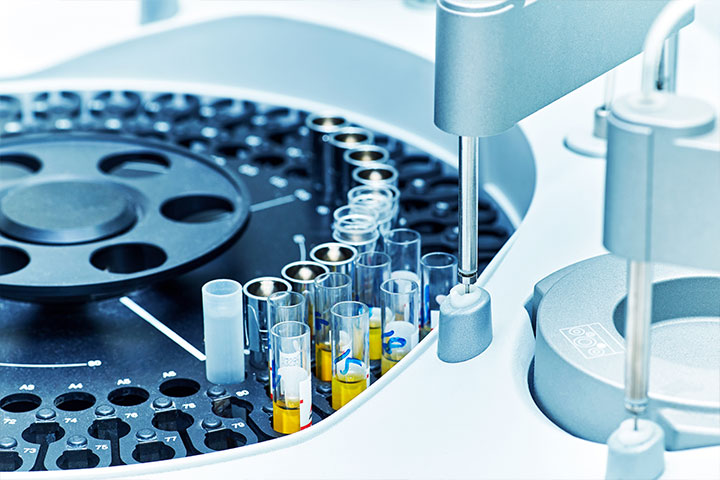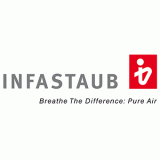
All technical regulations contain descriptions of conformity assessment procedures – the so-called schemes. The selection of the scheme depends on the characteristic of the products, kind of manufacturing or supply. The conformity assessment schemes are complementary to the conformity assessments according to the EU-Guideline 768/2008/EG in the Eurasian Economic Union.
Legal framework of the Eurasian Economic Union
The conformity assessment schemes and the required conformity proof are defined in the regulation No. 44 of April 18, 2018 “on standard schemes of assessment of conformity” and in the relevant Technical Regulations – TR CU and TR EAWU.
The term of conformity assessment is furthermore defined in the harmonised GOST ISO/IEC 17000-2012 norm “conformity assessment – vocabulary and general principles”.
Schemes of EAC conformity assessment
There are different schemes of conformity assessment. Every scheme determines how the applicant has to proceed in order to have the conformity of the product confirmed.
The scheme is set by the notified body or the applicant, depending on whether the product underlies the EAC certificate or the EAC declaration.
The scheme is marked with numbers and letters: c stands for certificate (Сертификат) and d for declaration (д - Декларация). The number of schemes diverge in every technical regulation.
The following characteristics are decisive in order to determine the conformity assessment scheme:
- The type of production and supply: series production, contract-bound delivery in batches or single shipment
- Degree of involvement of the notified body and the testing laboratory: test reports of the producer or product testing in the laboratory
- Risk potential of the product
- Sensitivity of the given characteristics to circumstances during production or usage
- Status of applicant: Producer, importer, authorized representative
- The adequacy of the conformity assessment, of the cost of the conformity assessment and of the purpose of the technical regulation
In determining the conformity assessment scheme, consideration shall be given to the overall risk and the possible damages, which can be caused by an unreliable conformity assessment.
Besides the analysis of the technical documents, following tests are required for EAC certification and EAC declaration:
- Test of the product sample – in the described certification procedures one ore more product samples are tested. The complexity, reliability and the price diverge by the indicated numbers
- Manufacturing audit – some products require not only a product inspection, but also the audit of the production process. The manufacturing audits have different level of complexity. In some cases, they can be replaced by the introduction of an ISO 9001 certified quality management system
- Surveillance is provided for most certification procedures. The inspection control is always conducted after having firmed the EAC certificate.
Schemes of EAC certification
| Scheme | Product examination | Manufacturing audit | Surveillance | Scope of application | Certificate of conformity | |
|---|---|---|---|---|---|---|
| 1C | Examination of the product sample | Manufacturing audit | Inspection of the product sample and/or manufacturing audit | For serial production, applicant, domestic/foreign manufacturer, if there is an authorized representative in the EAEU | EAC certificate for serial production | |
| 2C | Examination of the product sample | Certification of the quality management system | Inspection of the product sample and the quality management system | As at 1C | EAC certificate for serial production | |
| 3C | Examination of the product sample | - | - | For contract-bound delivery in batches or single production, applicant, domestic/foreign seller/supplier, if there is an authorized representative of the EAEU | EAC certificate for contract-bound delivery in batches or single-unit production | |
| 4C | Examination of each product | - | - | As at 3C | EAC certificate for contract-bound delivery in batches or single-unit production | |
| 5C | Examination of the product sample | manufacturing audit | Inspection of the product samples and/or the QM-system | For series production, if the conformity confirmation was impossible during the inspection, applicant, domestic/foreign producer, if there is an authorized representative of the EAEU | EAC certificate for serial production | |
| 6C | Examination of the product sample | Certification of the QM-system | As at 5C | As at 5C | As at 5C | |
| 7C | Examination of the product sample | Manufacturing audit | Inspection of the production sample and/or manufacturing audit | For machines/devices, which are used for series production; applicant; domestic/foreign producer, if there is an authorized representative of the EAEU | EAC certificate for serial production | |
| 8C | Examination of the product sample | Certification of the QM-system | Examination of the product sample and/or the QM-system | As at 7C | As at 7C | |
| 9C | Examination of the technical documentations | - | - | For serial delivery, which is shipped by foreign manufacturers/ for complex machines/devices, which are used for equipment of the establishments in the EAEU; applicant, domestic/foreign manufacturer, if there is an authorized representative of the EAEU | EAC certificate for serial delivery | - |
Schemes of EAC declaration
Besides the EAC certification there is another form of conformity assessment, which is the EAC declaration. In contrast to the EAC certificate the EAC declaration has to be created and completed by the applicant. The EAC declaration as well as the EAC certificate are both of the same binding force. Possible schemes of the EAC declaration are explained below:
| scheme | Product examination | Manufacturing audit | Manufacturing control | Scope of application | Certificate of conformity |
|---|---|---|---|---|---|
| 1D | Examination of the product sample by the producer | - | Manufacturing control by the producer | For series production; applicant, domestic/foreign producer, if there is an authorized representative of the EAEU | EAC declaration for serial production |
| 2D | Examination of the contract-bound delivery in batches or single-unit production by the applicant | - | - | For contract-bound delivery in batches or single-unit production production; applicant; domestic/foreign producer, seller (supplier), if there is an authorized representative of the EAEU | EAC declaration for contract-bound delivery in batches or single-unit production |
| 3D | Examination of the product sample in an accredited testing laboratory | - | Manufacturing control by the producer | For serial production; applicant; domestic/foreign manufacturer, if there is an authorized representative of the EAEU | EAC declaration for serial production |
| 4D | Examination of the contract-bound delivery in batches or single-unit production production by the applicant in an accredited testing laboratory | - | - | For contract-bound delivery in batches or single-unit production; applicant; domestic/foreign producer, if there is an authorized representative of the EAEU | EAC declaration for contract-bound delivery in batches or single-unit production |
| 5D | Examination of the product sample | - | Manufacturing control by the producer | For series production; applicant; domestic/foreign producer, if there is an authorized representative of the EAEU | EAC declaration for products, which are used in production facilities with higher risk exposure or for innovative products for whom no guidelines exist |
| 6D | Examination of the product sample in an accredited testing laboratory | Certification of the quality system | Manufacturing control by the manufacturer | as at 5D | EAC declaration for series production |
Schemes of state registration
The state registration confirms the conformity of the products to the sanitary and hygienic standards of the Eurasian Economic Union between Russia, Kazakhstan and Belarus. The state registration was introduced on 1st July 2010 and therefore replaces hygienic certificates.
State registrations as a form of conformity assessment concern especially products such as beverages, cosmetics, hygiene products etc.
| Product examination | Manufacturing audit | Manufacturing audit | Manufacturing control | Comment |
|---|---|---|---|---|
| Examination of the product sample and the technical documentations | - | Carried out by the manufacturer | Applicant, producer, supplier (importer) | Certificate of state registration |
| Examination of the product sample and the technical documentations | Manufacturing audit | carried out by the manufacturer | Applicant, producer | Certificate of state registration |
Legal framework of the European Union
The harmonizing directives of the European Union (for example Pressure Equipment Directive 2014/68/EU, Machinery directive 2006/42/EG, ATEX directive 2014/34/EU, Medical Products Directive 94/42/EWG) all contain norms for conformity assessment procedures.
In general, the conformity assessment procedures shall be conducted in modules (or module combinations). In each directive the modules are classified in 4 categories. The classification is carried out on the basis of the increasing risk potential of the product, which underlies the conformity assessment (for example Pressure Equipment Directive 2014/68/EU).
The conformity assessment system was reformed in the harmonization regulation Blue Guide.
Below you can find possible modules, which take into account the Blue Guide and Decision No. 768/2008/EG:
Module A – Internal Production control
The producer is obligated to provide all the technical documentations. It has to be possible to assess the conformity of the product to the specified requirements on basis of the documents; therefore, the documents have to include a risk analysis and evaluation according to legal regulations. Furthermore, the requirements have to be listed. It must be possible to capture the design, the manufacture and the operation of the product in so far as relevant for the assessment.
The producer shall provide a written declaration of conformity for a product model. The conformity declaration has to be kept for 10 years after the product model has been placed on the market.
The producer is obligated to attach the mandatory conformity mark to the product. A copy of the declaration of conformity shall be made available to the relevant body on request.
Module A1 – Internal Production control plus supervised product testing
As above, the producer shall provide all technical documentations including an adequate analysis and assessment of the risks. In order to proof conformity, the product has to be inspected (by the producer himself or in his assignment). The producer is free to choose whether to have the tests conducted by an accredited internal body or by a notified body of his choice. The producer shall provide a written declaration of conformity for a product model. As above the conformity declaration has to be kept for 10 years after the product model has been placed on the market.
Module A2 – internal product inspection plus supervised product checks at random intervals
The supervised product checks are carried out at random intervals. It is up to the producer whether to have the tests performed by an accredited internal body or by a notified body. Here there are taken into account the quality of the internal tests as well as the technical complexity. Before placing the product on the market, an adequate sample of the final products shall be taken on site and be examined by the body. In addition, other tests shall be carried out. The sampling procedure is intended to determine whether the manufacturing process performs withing acceptable limits, in order to ensure conformity of the product.
The regulations regarding the conformity declaration and conformity mark are identical to the modules above.
Module B – EC-type examination
EC-type examination is the part of conformity assessment procedure in which a notified body examines the technical design of the product, verifies and attests that the technical design of the product fulfills the requirements of the legislative instrument that apply to it.
The EC-Type examination may be carried out in one of the three following manners:
- Examination of a specimen, representative of the planned production, of the complete product (production type)
- Assessment of the adequacy of the technical design of the product through examination of the technical documentation and supporting evidence + assessment of the representative specimen of one ore more critical parts of the product (combination of production type and design type)
- Assessment of the conformity of the technical design of the product through examination of the technical documentation and additional evidence, without examination of a specimen (design type)
The EC-type examination is carried out by a notified body or your choice. The notified body also creates a report, which include the tests and their results. If all tests are passed successfully an EC-type examination certificate can be received.
Module C – conformity to type based on internal production control
Conformity to type based on internal production control is the part of a conformity assessment procedure which attests that the relevant products are in conformity with the types of the EC-type examination certificate. Additionally, the conformity shall be confirmed by other supporting evidence.
The regulations regarding the conformity declaration and conformity mark are identical to the first three modules above.
Module D – conformity to type based on quality assurance of the production process
This type of conformity assessment is the part of conformity assessment procedure in which the manufacturer has to ensure that he uses an appropriate quality system for production, final product inspection and testing of the relevant products. Furthermore, the type of the products has to be in conformity with the type described in the EC-type examination certificate. Technical documentations shall also be examined.
The notified body shall carry out periodic audits as well as unexpected visits, in order to make sure that the manufacturer maintains and applies the quality system and fulfills all relevant requirements. The regulations regarding the conformity declaration and conformity mark are identical to the first three modules above.
Module D1 – Quality assurance of the production process
Here technical documentations and the quality system are checked by the notified body of your choice. The surveillance shall make sure that the manufacturer fulfills all specified requirements and obligations regarding the approved quality system. The regulations regarding the conformity declaration and conformity mark are identical to the first three modules above.
Module E – conformity to type based on product quality assurance
It shall be assessed whether the manufacturer has installed an approved quality system for the final products as well as for the product tests. A surveillance conducted by the notified body is included. The regulations regarding the visits by the notified body, the conformity declaration and the conformity mark are identical to the modules above.
Module E1 – Quality assurance of final product inspection and testing
Here it shall be assessed whether the manufacturer has installed an approved quality system for the final products as well as for the product tests. As in Module E a surveillance is included. The regulations regarding the visits by the notified body, the conformity declaration and the conformity mark are identical to the modules above.
Module F – conformity to type based on product verification
This type of conformity assessment shall confirm that the relevant products are in conformity with the described types in the EX-type examination certificate. In addition, supporting controls are carried out to confirm the conformity.
The notified body checks the conformity using the following methods:
- Inspection and test of each single product
- Statistical verification
The regulations regarding the conformity declaration and conformity mark are identical to the first three modules above.
Module F1 – conformity based on product verification
This type of conformity assessment procedure is basically identical to the Module F. The main difference consists in the creation of technical documentations by the manufacturer which is required in this module.
Module G – conformity based on unit verification
The manufacturer has to establish technical documentations which have to show that the products are in conformity with the specified requirements. All requirements have to be listed in the documentations as well as the design, the manufacture and operation of the product, as far as relevant for the assessment.
Module H – conformity based on full quality assurance
In order to confirm the conformity, the manufacturer shall operate an approved quality system for design, manufacture and final product inspection and testing of the products. The quality system has to make sure that the products are in conformity with the specified requirements. The conformity shall be assessed by the notified body.
Module H1 – conformity based on full quality assurance plus design examination
This type of conformity assessment procedure is basically identical to the Module H1. In addition, the design shall be assessed by the notified body. After the examination the manufacturer receives the EC-design examination certificate.



















































